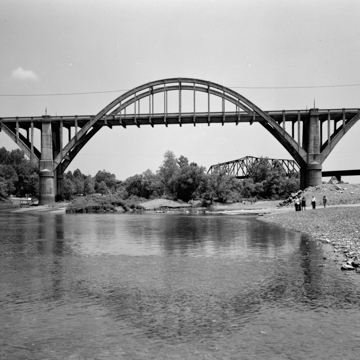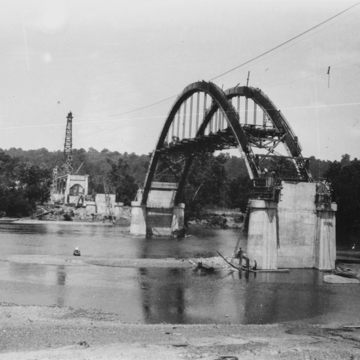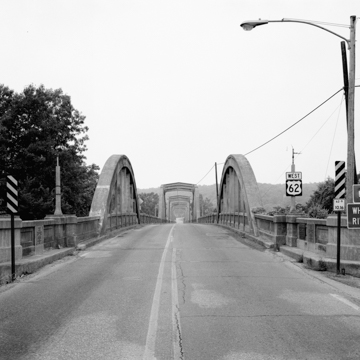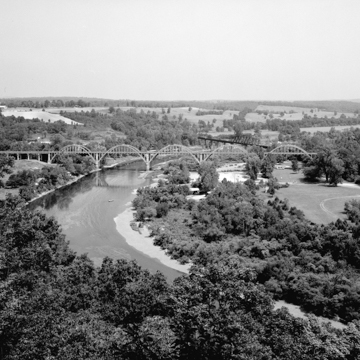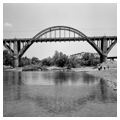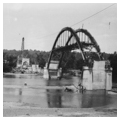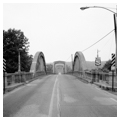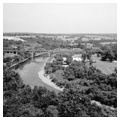The graceful five-span Cotter Bridge (with a small sixth entrance arch) changed the life of the town, opening up the largely inaccessible Ozarks to road transportation and becoming a major factor in the development of tourism in north-central Arkansas. The bridge is the only one in the state constructed by the Marsh Engineering Company of Des Moines, Iowa. In the Marsh system (named for James B. Marsh, who patented it in 1912), the steel arches are assembled on the ground and lifted onto piers, and the structure is then encased in concrete. During its opening in 1930, an airplane released a stream of poppies over the span, and this graceful design has been showered with accolades ever since. The bridge is a National Historic Civil Engineering Landmark.
You are here
Cotter Bridge
If SAH Archipedia has been useful to you, please consider supporting it.
SAH Archipedia tells the story of the United States through its buildings, landscapes, and cities. This freely available resource empowers the public with authoritative knowledge that deepens their understanding and appreciation of the built environment. But the Society of Architectural Historians, which created SAH Archipedia with University of Virginia Press, needs your support to maintain the high-caliber research, writing, photography, cartography, editing, design, and programming that make SAH Archipedia a trusted online resource available to all who value the history of place, heritage tourism, and learning.















